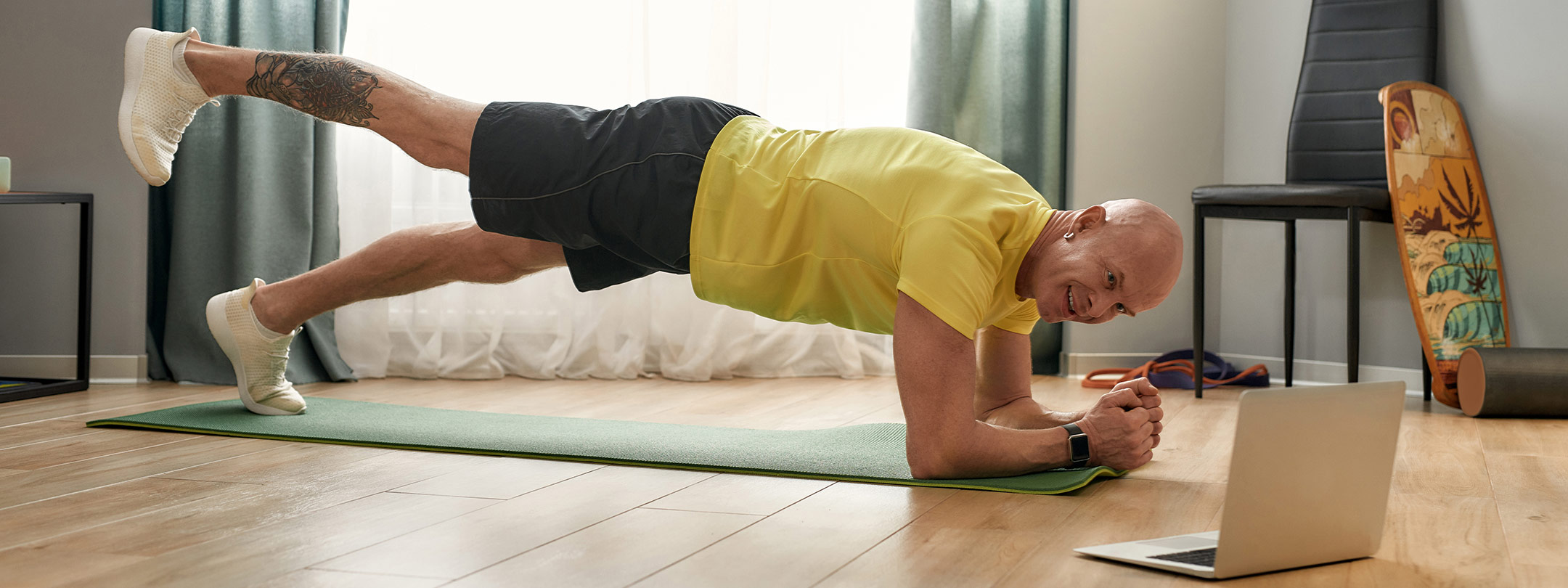Staying healthy can feel out of reach when your money is tight. Between rising grocery costs, medical appointments, and expensive gym memberships, focusing on wellness might seem expensive. But it doesn’t have to be.
Here are 10 ways you can keep your body as healthy as possible without breaking the bank.
1. FIND FREE ONLINE WORKOUT VIDEOS
One of the easiest ways to cut fitness costs without sacrificing wellness is to participate in free workout videos online.
Yoga, strength training, high-intensity interval training (HIIT), dance cardio, and many more genres of exercise are available on platforms like YouTube, fitness apps, and even social media.
Depending on your time and skill level, you can find a video that fits your needs for the day. By using free resources instead of overpaying for a fancy gym membership or boutique fitness classes, you can stay active and healthy on a budget.
2. TAKE A WALK
Walking outdoors is one of the simplest and most effective ways to boost your physical and mental health—without spending a dime. According to the NIH, walking regularly can help lower your risk of high blood pressure, heart disease, and diabetes. It also strengthens bones and muscles, supports weight management, and can even lift your mood.
The added benefit of being outside means you’re also getting fresh air, natural light, and a mental break from screens and indoor stressors. Whether it’s a stroll through your neighborhood or a brisk walk in the park, stepping outside for a walk is a free, accessible way to support your overall well-being.
Make sure you go for walks when it’s not too hot or too cold out. If the weather isn’t ideal, walking around an indoor mall may be an option. Some malls will even open their doors an hour prior to the stores opening just so people can get some steps in when the weather is rough.
Whether you’re walking inside or out, drink plenty of water (especially if it’s warmer outside). If you’re outdoors, make sure you wear sunscreen year-round to protect your skin and bug spray in the summer months.
3. GO FOR A HIKE

Hiking is more than just a scenic way to spend your day. It’s a free or low-cost activity that can get your step count and heart rate up.
Many trails are free to access and easy to find with certain apps. It’s wise to look at the reviews of the trails and the intensity before you head out. Start with lower intensity hikes until you feel comfortable and then start increasing the difficulty.
Before you take your first step on the trail, make sure you’re wearing a good pair of shoes, sunblock, and bug repellent. Above all, bring lots of water!
4. DANCE AROUND AT HOME
Dancing at home is a fun and free way to stay physically active. It requires no special equipment or gym membership—just a bit of space and your favorite music.
When you dance regularly, studies show you may have reduced stress, more energy, improved mood, better heart health, and more. So crank up the tunes and let loose—no special training required.
5. SEE YOUR PCP FOR AN ANNUAL VISIT
One of the best ways you can keep up your health on a budget is by visiting your primary care provider each year. Most insurance plans cover an annual preventive care visit at no cost to the member. Taking less than an hour once a year to go over your lifestyle choices and receive recommended vaccines and tests can protect your health for years to come.
If you need an insurance plan that helps people live their healthiest life possible, check out Select Health insurance plans. Learn more here.
6. SHOP IN-SEASON PRODUCE AND WEEKLY SALES
One way to improve your wellness on budget is by shopping weekly sales and focusing on in-season produce. Grocery stores often rotate discounts on fresh items, pantry staples, and lean proteins—so planning your meals around these deals can significantly cut costs. By checking store flyers or apps before you shop, you can build a flexible meal plan that takes advantage of what’s most affordable that week.
In-season fruits and vegetables are typically less expensive than other produce. For example, berries are cheaper in summer, while root vegetables are more affordable in winter. With a little extra planning, you can still eat nutritious foods without breaking the bank.
7. MEAL PREP IN LARGE QUANTITIES

When you get home from a long day of work or school, the last thing you want to do is spend the next hour or more in the kitchen making food. But it’s actually important to put some time into the kitchen. Research shows those who eat out more have a higher likelihood of poor health outcomes. Not only that, but many people end up saving money when they make their meals ahead of time in bulk.
There are hundreds of free recipes online as well as tricks and tips for those just getting started. Set aside a few hours each weekend to make large quantities of food for the week ahead. By shopping sales, in-season produce, buying in bulk, and avoiding take out, you can save money.
8. TAKE ADVANTAGE OF WELLNESS REWARDS FROM YOUR INSURANCE PLAN
If your health insurance plan offers wellness rewards, take advantage! Many Select Health plans offer a Wellness Rewards program that allows members to earn up to $240/year for individuals or up to $580/year per family. Members can earn rewards by logging healthy actions.
Hitting a certain number of steps per day, exercising, meditating, and completing preventive care screenings can all contribute to earing rewards.
To learn more about Select Health’s Wellness Rewards program and which plans are eligible, click here.
9. USE YOUR HSA OR FSA TO SUPPORT WELLNESS
If you have a Health Savings Account (HSA) or Flexible Spending Account (FSA), you’ve got a powerful way to save on wellness. You can use those tax-advantaged dollars for eligible medical expenses, which may include certain items like:
- Sunscreen, skincare, and allergy medication
- Blood pressure monitors and fitness trackers
- First aid kits, compression socks, or heating pads
- Mental health apps and more
Want a full list? Check out these surprisingly eligible items.
Just remember: FSA funds often expire at the end of the year, while HSA funds roll over. So, if you have an FSA, set a reminder in early December to use any remaining funds. A last-minute purchase of a first aid kit, sunscreen, or even foot care products could save you from losing those dollars.
FIND A PLAN THAT HELPS YOU STAY HEALTHY
Select Health’s mission is to help people live their healthiest lives possible. One of the ways we support our members and communities is by offering health insurance plans that empower people to make choices that can improve their lives.
Whether you sign up for a plan with Wellness Rewards or you enroll in an FSA or HSA, you can decide how to focus on your wellness without breaking the bank.
Explore Select Health insurance plans to find one that fits your needs and goals best.
Note: Information on this page is not considered medical advice. Please contact your primary care provider for specific medical care guidance and recommendations.
This article is intended for informational purposes only and is not legal or medical advice. Links to other sites are provided as a convenience, but Select Health does not endorse the third-party sites, information, or services.
Related Articles



